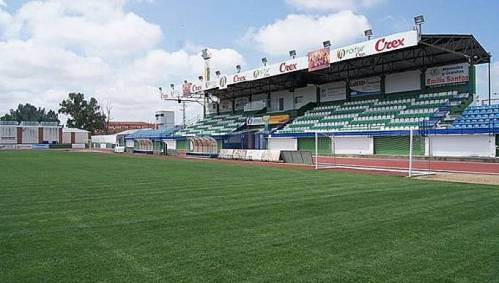The summer of 1992 was not a good time for Villanueva de la Serena, a town of 25,400 inhabitants 65 miles east of the regional capital, Badajoz. CD Villanovense, the town’s senior club since formation in 1951, had just been relegated from Segunda B. And with debts of 16 million pesetas, the club called it a day. Luckily the football loving residents of the town found refuge in the newly formed Sport Club Villanueva, who started life in the Regional Preferente. By 1996 the club reached the Tercera, which is where they have played the majority of their football since. In 1999 the club adopted the title of Club de Fútbol Villanovense and took on the green & white colours and the crest of the former team.

Up to the start of 2011-12, there has been three season-long sojourns in Segunda B, the first coming in 2003-04. After dominating Group 14 of the Tercera in 2010-11 and winning promotion with a 2-1 aggregate play-off victory over Andalucian’s Comarca de Níjar, Villanovense enjoyed a successful season, clocking-up 55 points to finish in ninth place. Unfortunately, 2012-13 was less successful and after finishing in 16th position, the club endured the agony of losing in the relegation play-offs to Zamora. They returned to Segunda B in 2014 and earned a a highest placed finish of fourth. They lost to Bilbao Athletic in the play-offs, but their high league finish earned a place in the following season’s Copa del Rey. Their reward was a visit from cup holders Barcelona on 28 October 2015.

Villanovense play at the Estadio Romero Cuerda, a municipally owned stadium with an athletics track around the pitch. It opened in 1976 and is on the eastern edge of town and had an initial capacity of 6,500. To begin with, the layout was a traditional square-sided format, but an athletics track was added in the early 1980s. The capacity was reduced to 2,500 in 2012 when the eastern terrace was seated. In all there are 1,800 seats, 400 of which are under the ground’s only cover on the west side of the stadium. The capacity was temporarily increased to 10,000 for the visit of Barcelona in October 2015, with the addition of large banks of seating on the arc behind each goal and more seats in front of the main stand. All quite pleasant, but rather unremarkable.
